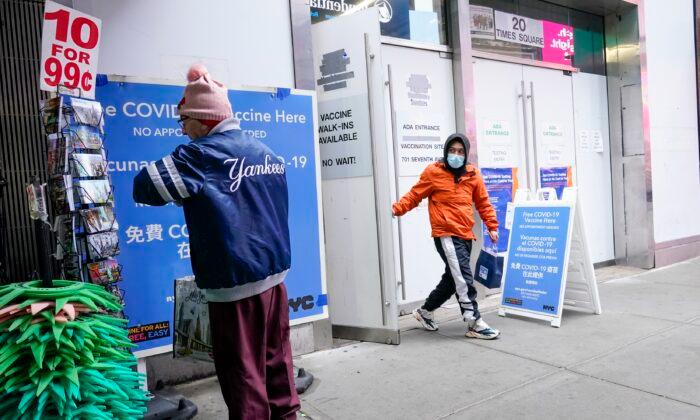A new survey by Goldman Sachs paints a picture of U.S. small businesses struggling under the weight of surging prices, hiring woes, supply chain dislocations, and an Omicron-driven fourth wave of infections.
While the survey didn’t differentiate consumer price inflation from producer price inflation, both measures have in recent months hit multi-decade highs.
While government data shows that the month-over-month pace of both producer and consumer price inflation slowed in December, the Goldman poll showed 84 percent of small business owners saying upwards price pressures have increased since September 2021, suggesting inflation may have become more entrenched in some sectors of the U.S. economy.
While inflation was a serious concern to small business owners, it ranked third (18 percent) as the most significant problem facing small businesses. Workforce challenges were the chief worry, with 50 percent identifying difficulties finding and retaining qualified staff as their biggest business problem, followed by 19 percent pointing to supply chain woes.
The Omicron surge has also had a negative impact, with 71 percent of small business owners telling Goldman that the recent rise in cases has hurt their bottom line, while 37 percent said they have been forced to close or scale back operations on account of the fourth wave.
“The COVID-19 pandemic, exacerbated by the recent surge in COVID cases, continues to disrupt small business operations and sales,” Holly Wade, Executive Director of NFIB’s Research Center, said in a statement. “Staffing shortages and supply chain disruptions also haven’t eased for small businesses despite owners attempts to raise compensation and adjust business operations to accommodate.”
The NFIB survey showed a total of 70 percent of small business owners said the Omicron wave has hurt sales to some degree, with 10 percent reporting that revenues have been hit “significantly.”
The percentage of owners raising average selling prices edged down two points to a net 57 percent in December, an improvement from November but a historically elevated reading, according to NFIB.





